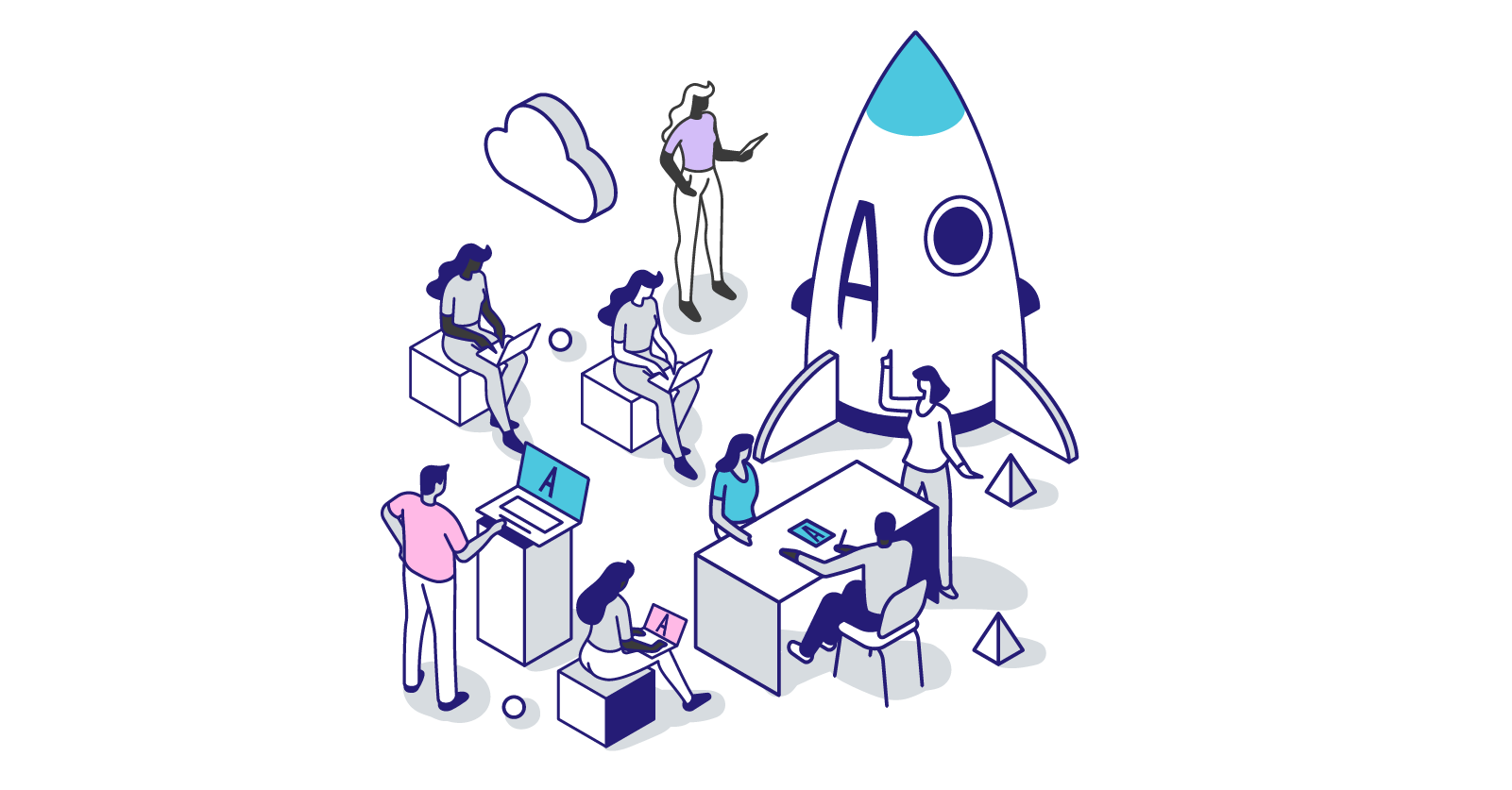The science and art of workshop design, in my admittedly biassed opinion, is something that is rarely given enough attention and thought. More often than not, a room is booked for a day, Post-its are bought, and people get together to “come up with ideas”. Nothing gets done and it’s mainly an expensive waste of time.
I’ve been giving a lot of thought recently on how to democratise the process and the tools, approaches and methods I use to help everyone design better collaboration sessions. To that end, I’m giving a talk at the Container Solutions WTF is SRE Conference in May on Five (Practical) Tips to Make Your Workshops Suck Less (tickets for the conference here).
Anyway, as part of my interests outside work a lecture by Dr John Vervaeke caught my attention recently. As I watched, it occurred to me that what he was talking about appeared to be a useful “checklist” for stuff you should keep in mind for effective workshop design.
Dr Vervaeke is an associate professor of cognitive science at Toronto University and a philosopher. As part of his work he has defined “The Five Pointers of Consciousness”, which is to say five “things” that point towards the nexus of consciousness in the human mind.
Being mindful of these Five Pointers (which, conveniently, are also five As) will help you design better collaborative working sessions. They are:
- Awakeness
- Awareness
- Access
- Authority
- Aspectuality
The first two on our list “Awakeness” and “Awareness” are pretty bleeding obvious. Yes, if people are going to be useful it’s handy if the boxes marked “Lights on” and “Someone’s home” are both checked. However, it’s amazing how frequently these things are left to chance, neglected or overlooked entirely, so I’ve put together a few hints for maintaining both throughout the course of a workshop. If you’re happy with where you are on keeping people awake and aware, skip to Access for the possibly slightly less instinctive ideas. I’d recommend reading the tips, though - there might be some stuff you haven’t thought of.
Awakeness
Awakeness refers to the state of being alert and attentive. Both of those states are critical to successful workshop design and collaboration. They are states that, as a facilitator, you must be constantly tuned-in to and be ready to take action to address as required.
There are several things you can do to maintain awakeness:
- Use warm-up exercises.
- Take frequent breaks.
- Think about what you’re giving people for lunch.
- Standing up over sitting down.
- Your energy is the bar: model the energy level you expect to see.
- Avoid doing high brain-power activities (like brainstorms) late in the day; but
- Pay attention to the morning person/night owl split.
Awareness
You are capable of receiving information and recognising it and its relevance in some way. As the facilitator you need to provide not only the opportunity for the participants to gather as much information as possible about the problem you’re solving but, more importantly, provide the tools for them to assess what’s relevant and what’s not. Signal/noise filtration, basically. In the context of workshop planning:
- Think about and carefully plan your workshop’ s physical space.
- Use the space to ensure the most relevant information is most easily accessible at all times.
- Prune and sideline information and insights in your workspace(s) as you move forward for the purposes of 2.
- Use exercises that iteratively focus the information as you move through the workshop for the purposes of 3.
Access
Access refers to the ability to retrieve information from your unconscious so that you can use it when it’s needed. Like at the beginning of this sentence when you weren’t thinking about a cheese sandwich, but now you’re thinking about a cheese sandwich. You always know that cheese sandwiches exist, but you’re not always thinking about cheese sandwiches, so we have the ability to not think about a thing that we know, then think about it when we know we need to know it. Clever brain.
Any workshop must be designed in a way that affords the participants every opportunity to access the relevant information they have in their brains and the problem environment or, perhaps more importantly, become aware of the lack of it and what that means in the context of the problem they’re trying to solve.
Tips
- Leverage user research and point of view-type exercises.
- The LEGO Serious Play methodology is a very good way of providing access to the various flavours and combinations of knowns and unknowns.
- Avoid telling participants what they’ll be doing in detail, especially what they’ll be doing after the thing they’re doing now: let them be in the moment as much as possible.
- Use exercises that solve component parts and allow them to come together in a way that facilitates the emergence of the “whole solution” in a natural way.
- Create the safest possible space in your workshops. Encourage weirdness, irrelevance and storytelling (especially in Synthesis): you rarely know what genius looks like until you see it.
Authority
Authority relates to the feeling of ownership of an experience. In the context of consciousness this relates to the idea that my feeling of consciousness, “is mine, it’s private to me and I direct it”. In workshop design terms, the participants must not feel led and, as individuals, they must not be given the opportunity to lead the outcome towards their own pre-existing ideas. This is another good reason for not telling participants what they’re going to be doing in detail—they should not be given the opportunity to attempt to manipulate their responses to exercise A in an attempt to gain control over or influence the output of exercises B, C, or D.
It is of utmost importance that participants as a group are in control of the destiny of the workshop; of their interpretations of the problems they’re identifying; of the solutions and the way they address the user needs they have identified. There are few things more detrimental to the outcome of a workshop than people feeling as though they’re working towards a predetermined outcome.
- Establish with the workshop stakeholders (and participants) that it’s not possible to know the output of a workshop in detail—get them comfortable with ambiguity.
- As a facilitator you should guide and assist, rarely direct.
- Always keep options open in the workshop in terms of the solution direction.
- Focus the participants on the user at all times; and
- Avoid telling participants what they’ll be doing in detail, especially what they’ll be doing after the thing they’re doing now: let them be in the moment as much as possible.
Aspectuality
Let’s get a quick definition out of the way first since this is, to say the very least, quite a jargony word. Aspectuality refers to our point of view on our environment and our experience.
Experience relates to the feeling of the redness of red or the coolness of water. Environment, which is what we’re interested in when it comes to workshop design, is about our ability to see things in our environment in the appropriate context. For example: I see the glass of water on my desk as a vessel I can take a drink from, but I could see it as a weapon.
Environmental aspectuality is probably the most important part of workshop design.
You must ensure that everyone is viewing whatever problem you’re trying to solve from the same aspect. This is critical. Critical. If you fail to establish a common understanding of what you’re working on and why, the workshop will be a failure.
A Design Thinking problem statement will typically begin with “Redesign the x experience…”. If it’s “Redesign the new employee onboarding experience” that will mean completely different things to different people. As just one easy example, does the onboarding experience start on day one at the new job; or does it start from the moment a job is offered? Does it start with the job advert?
If you fail to get that “shared aspect” established right at the start you’re sowing the seeds of confusion. You will reap what you sow and it will not taste nice.
Tips
- Spend time wrangling the problem statement with the workshop participants. Pull it to bits, rewrite it, commit to it as a group, write it big.
- Revisit it frequently. Check in with yourselves.
Both of these will establish, and ensure you are always aware of, that common understanding of what you’re working on and why.
So there we go, the Five Pointers to Consciousness and workshop design.
You can check out John Vervaeke’s talk in full on YouTube here and if you’d like some practical (instead of mainly theoretical) tips on how to make your workshops suck less, come and check out my talk at the Container Solutions “WTF is SRE?” Conference in London on May 4-5. Get your tickets here.



 Previous article
Previous article
